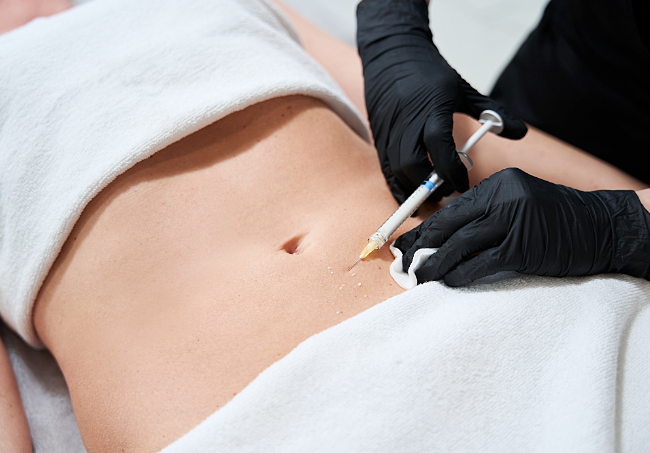Can Aqualyx Injections Replace Liposuction?
When it comes to non-surgical body contouring, Aqualyx injections have gained significant attention. This innovative treatment has been hailed as an effective alternative to traditional liposuction, providing patients with a less invasive option to target stubborn fat. But can Aqualyx injections truly replace liposuction? Let's explore the Aqualyx injections in Dubai treatment.
What Are Aqualyx Injections?
Aqualyx injections are a non-surgical fat reduction treatment that involves the use of a substance designed to target and break down fat cells. The active ingredient in Aqualyx is a compound that dissolves fat when injected into specific areas of the body. The procedure works by breaking down fat cells, which are then naturally eliminated by the body over time.
How Do Aqualyx Injections Work?
Aqualyx injections work by using a specialized formula that is injected directly into the fatty tissue. Once injected, the substance breaks down the fat cells, causing them to rupture. Over the course of several weeks, the body naturally processes and eliminates these dissolved fat cells through the lymphatic system.

Benefits
Aqualyx injections offer several benefits, making them an appealing alternative to liposuction:
- Non-Surgical: Aqualyx injections do not require surgery, reducing the risks associated with invasive procedures.
- Minimal Downtime: Unlike liposuction, which requires a significant recovery period, Aqualyx injections involve minimal downtime. Most patients can resume their daily activities shortly after treatment.
- Targeted Fat Reduction: Aqualyx can effectively target specific areas of stubborn fat, such as love handles or double chins, for a more sculpted appearance.
- No Scarring: Since Aqualyx involves injections rather than incisions, there is no scarring, making it an appealing option for those seeking a more natural body contour without visible marks.
Aqualyx vs. Liposuction: Key Differences
While both Aqualyx injections and liposuction are designed to reduce fat, they differ in several ways:
- Invasiveness: Liposuction is a surgical procedure that requires incisions, while Aqualyx is a non-invasive injection.
- Recovery Time: Liposuction typically involves a longer recovery period due to the surgical nature of the procedure, while Aqualyx offers minimal downtime.
- Results Timeline: Liposuction provides immediate results, whereas Aqualyx injections require several weeks to see full effects as the fat is gradually eliminated by the body.
Is Aqualyx a Replacement for Liposuction?
Aqualyx injections can be an excellent alternative to liposuction for individuals looking to target small areas of fat without undergoing surgery. However, it is not a complete replacement for liposuction in cases where a larger volume of fat needs to be removed. Liposuction remains the gold standard for those seeking significant fat removal in one session.
FAQs
1. How many Aqualyx treatments are needed?
Aqualyx typically requires multiple sessions, with most patients seeing results after 2-4 treatments spaced several weeks apart.
2. Does Aqualyx work on all body types?
Yes, Aqualyx is suitable for most body types, especially for individuals with localized fat pockets that don’t respond well to diet and exercise.
3. Are Aqualyx injections painful?
Aqualyx injections may cause some discomfort, but the procedure is generally well-tolerated. Numbing creams are often applied to minimize pain.
4. How long do Aqualyx results last?
Once the fat is eliminated, the results are permanent as long as a healthy lifestyle is maintained.
5. Can Aqualyx be used for large fat areas?
Aqualyx is best suited for smaller areas of fat. For larger fat deposits, liposuction may be a more appropriate solution.
Conclusion
Aqualyx injections present a promising solution for individuals seeking non-surgical fat reduction. While it can effectively target small pockets of fat, it is not a substitute for liposuction when larger fat volumes need to be addressed. Ultimately, the choice between Aqualyx and liposuction depends on individual goals, the amount of fat to be treated, and personal preferences regarding surgery and recovery time.
